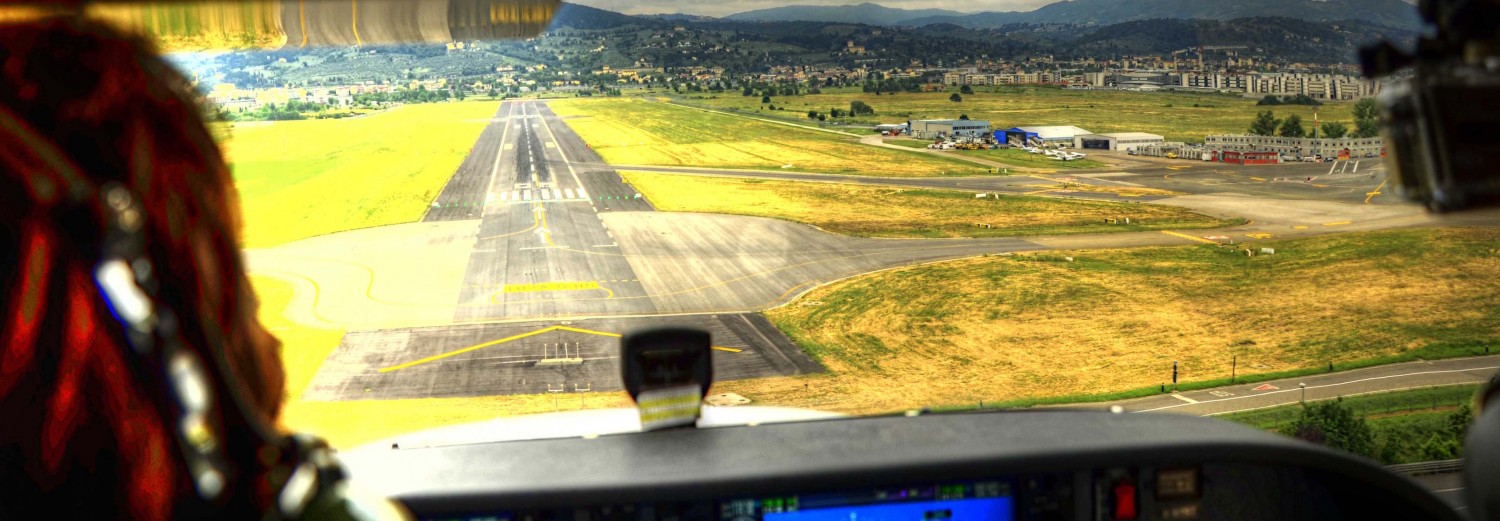
[…]
If your passengers are new flying in light aircrafts, they will need to be told not to touch any of the controls or switches without your permission, and to tell you right away if they move something accidentally. It might be worth showing the passengers the fresh-air vents and how to use them, particularly if these are well away from the main flying controls and instrument panel. Passengers also must appreciate that at certain times (especially around take-off and landing) they should not distract you from your primary task of flying the aeroplane; “What does this button do?” is the last thing you want to deal with in the middle of a gusty crosswind landing! If the aircraft is equipped with intercom and the passengers are wearing headsets, ensure that they are adjusted for comfort. The operation of the intercom needs to be explained and passengers must realize that they should not talk over any messages the pilot is listening to. Your passengers must also be briefed as to what to do in the event of an emergency. If such a thing should arise, the pilot is likely to have his hands full and have little spare time or mental capacity to talk to the passengers too. Probably the most crucial point for passengers to appreciate is that in an emergency they will be expected to fasten and tighten-up their own seat-belts or harness as far as possible, and make sure that their seat is secure with the seat back upright. Headphones should be removed (they can get tangled up with the seat belts as the wearer tries to leave the cabin) and sharp objects (such as keys and pens) emptied from the pockets. A recommended bracing position has been developed as a result of safety studies and accident investigations. The lap strap should be fastened tightly and then the upper body bent forward as far as possible to put the chest close to he knees, probably with the head touching the seat back ahead (if there is one). A jacket or sweater rolled up and placed in front of the face and head might also help.
“Brace for impact” is believed to significantly reduced the risk of injury compared to sitting in an upright position.
(to be continued)

Se i passeggeri sono alla loro prima esperienza, dovrai istruirli a non toccare nessuna leva o pulsante senza il tuo permesso, raccomandando loro che qualora ciò accada (può succedere soprattutto in abitacoli particolarmente angusti), tu sia immediatamente avvertito. Può essere utile loro mostrare le canalette dei condotti di aerazione e il loro funzionamento, soprattutto se queste sono distanti dal pannello dei comandi principali. I passeggeri potranno gradire se in certe situazioni di volo (specialmente durante le fasi più delicate) gli consiglierai di non distrarti dal compito principale della conduzione del volo; sentirsi chiedere “cos’è questo pulsante” nelle fasi finali di un atterraggio con venti impetuosi al traverso, sarà l’ultima cosa che vorrai sentirti chiedere..! Se l’aereo è equipaggiato con intercom e i passeggeri portano le cuffie, assicurati del loro comfort. Il funzionamento dell’ intercom deve essere loro spiegato e i passeggeri devono essere consapevoli che parlando interferiranno con le comunicazioni.
I tuoi passeggeri dovranno essere istruiti al corretto comportamento durante un’emergenza. In tali circostanza il pilota avrà le sue mani impegnate (non solo) e poco tempo a disposizione per dilungarsi in spiegazioni. L’aspetto più importante per la sicurezza dei passeggeri sarà che in queste situazioni loro stessi siano in grado di allacciarsi le cinture di sicurezza nel modo più stretto possibile e regolare il loro seggiolino in posizione eretta. Le cuffie dovranno essere tolte (i fili potrebbero ostacolare l’uscita nel caso questi dovessero attorcigliarsi) e oggetti appuntiti (penne e chiavi) tolti dalle tasche. Una particolare posizione raccolta (con la testa tenuta fra le mani e il busto piegato in avanti, possibilmente con la testa a contatto con il seggiolino anteriore, le gambe piegate indietro con i piedi poggiati a terra) è stata studiata come la posizione più sicura nel caso di impatti violenti. Un maglione o una giacca arrotolati e posizionati davanti alla faccia potrebbero essere utili.
“Brace for impact” è ritenuta essere la posizione che riduce significativamente il rischio di traumi e ferite, a differenza di una seduta in posizione eretta.
Above Trasimeno lake, flying towards Terni.

